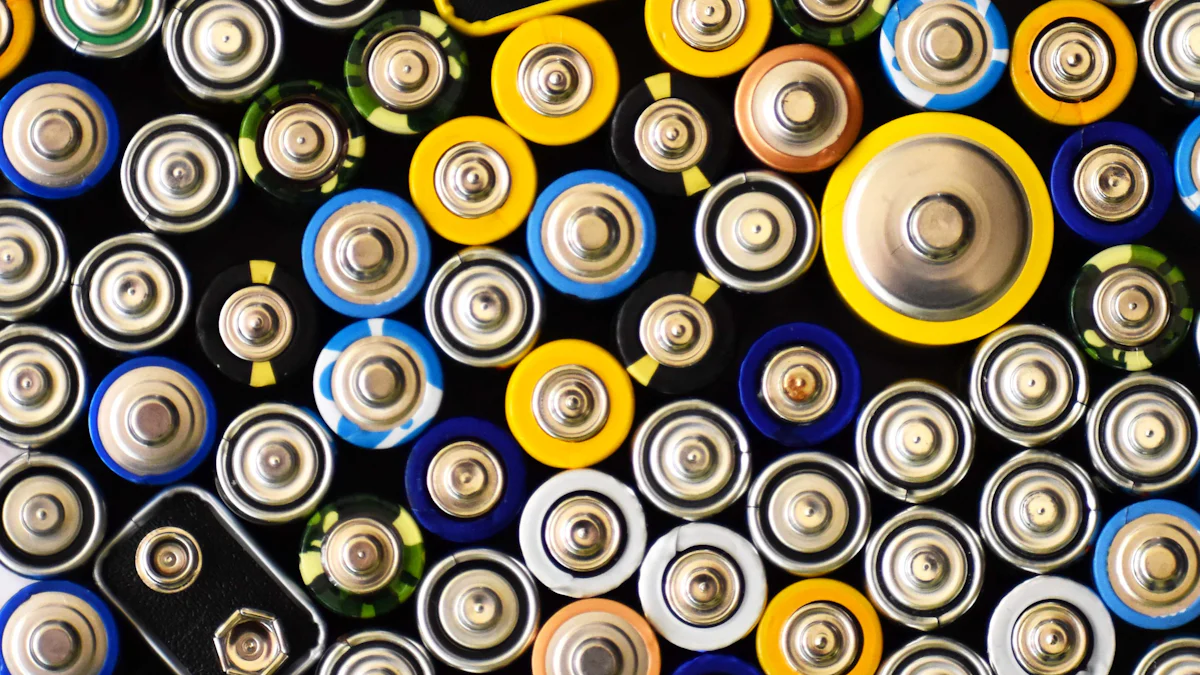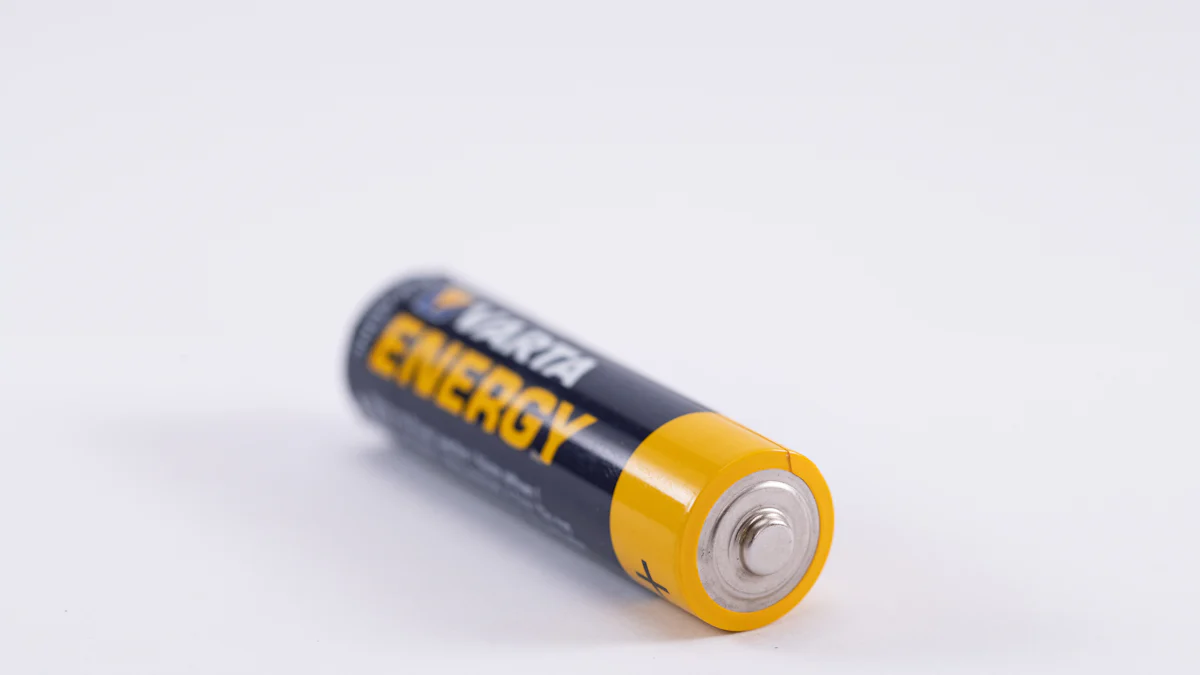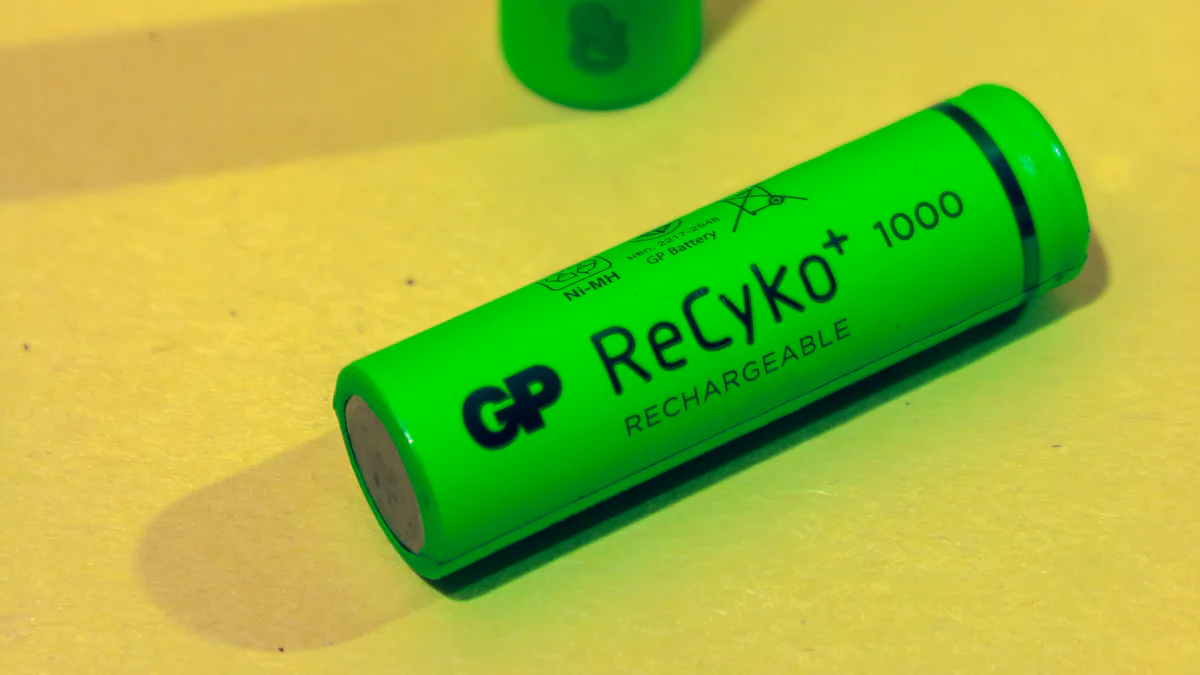
Alkaline battery manufacturers operate in regions that drive global innovation and production. Asia dominates the market with countries like China, Japan, and South Korea leading in both quantity and quality. North America and Europe prioritize advanced manufacturing techniques to produce reliable batteries. Emerging markets in South America and Africa are also stepping up, showing potential for future growth. These regions collectively shape the industry, ensuring a steady supply of batteries for various applications worldwide.
Key Takeaways
- Asia, particularly China, is the leading region for alkaline battery production due to its access to raw materials and cost-effective labor.
- Japan and South Korea focus on innovation, producing high-quality alkaline batteries that meet modern consumer demands.
- North America, with major players like Duracell and Energizer, emphasizes reliability and performance in battery production.
- Emerging markets in South America and Africa are gaining traction, with Brazil and several African nations investing in battery manufacturing capabilities.
- Sustainability is becoming a priority, with manufacturers adopting eco-friendly practices and developing recyclable batteries.
- Technological advancements are shaping the future of alkaline battery production, enhancing efficiency and product performance.
- Government policies, including subsidies and tax incentives, play a crucial role in attracting battery manufacturers to specific regions.
Regional Overview of Alkaline Battery Manufacturers

Asia
China as the global leader in alkaline battery production.
China dominates the alkaline battery industry. You will find that it produces the highest volume of batteries worldwide. Manufacturers in China benefit from access to abundant raw materials and cost-effective labor. These advantages allow them to produce batteries at competitive prices. Many global brands rely on Chinese factories for their supply, making the country a cornerstone of the industry.
Japan and South Korea’s emphasis on innovation and premium-quality batteries.
Japan and South Korea focus on creating high-quality alkaline batteries. Companies in these nations prioritize advanced technology and innovation. You can see this reflected in their premium products, which often last longer and perform better than standard options. Both countries invest heavily in research and development, ensuring their batteries meet the needs of modern consumers. Their commitment to quality has earned them a strong reputation in the global market.
North America
The United States’ significant role in production and consumption.
The United States plays a key role in both producing and consuming alkaline batteries. Major manufacturers like Duracell and Energizer operate within the country. You will notice that these companies emphasize reliability and performance in their products. The U.S. also has a large consumer base, driving demand for alkaline batteries in various applications, from household devices to industrial tools.
Canada’s growing presence in the alkaline battery market.
Canada is emerging as a notable player in the alkaline battery market. Canadian manufacturers focus on sustainable practices and high-quality production. You might find that their approach aligns with the growing demand for eco-friendly products. As the industry evolves, Canada continues to expand its influence, contributing to North America’s overall presence in the global market.
Europe
Germany’s advanced manufacturing capabilities.
Germany stands out for its advanced manufacturing techniques. German companies prioritize precision and efficiency, producing alkaline batteries that meet strict quality standards. You will often find their products used in industries requiring reliable and durable power sources. Germany’s focus on innovation ensures its manufacturers remain competitive in the global market.
Poland and other Eastern European countries as rising hubs.
Eastern Europe, led by Poland, is becoming a hub for alkaline battery production. Manufacturers in this region benefit from lower production costs and strategic locations near major markets. You may notice that these countries are attracting investments from global companies seeking to expand their operations. This growth positions Eastern Europe as a rising force in the industry.
Other Regions
South America’s increasing interest in battery production, led by Brazil.
South America is becoming a region to watch in the alkaline battery industry. Brazil leads this growth with its expanding manufacturing capabilities. You will notice that Brazilian companies are investing in modern facilities and technology to meet rising demand. The region’s abundant natural resources, such as zinc and manganese, provide a strong foundation for production. These materials are essential for making alkaline batteries. South America’s growing focus on industrial development also supports this trend. As a result, the region is positioning itself as a competitive player in the global market.
Africa’s potential as an emerging player in the industry.
Africa shows significant potential in the alkaline battery industry. Several countries are exploring opportunities to establish manufacturing facilities. You might find that Africa’s untapped resources and low labor costs make it an attractive option for future investments. Governments in the region are also introducing policies to encourage industrial growth. These efforts aim to create jobs and boost local economies. While Africa’s role in the industry remains small today, its strategic advantages suggest a promising future. The continent could soon become a key contributor to the global supply chain.
Factors Influencing the Location of Alkaline Battery Manufacturers
Access to Raw Materials
The importance of proximity to zinc and manganese dioxide supplies.
Raw materials play a critical role in determining where alkaline battery manufacturers set up their operations. Zinc and manganese dioxide, two essential components for producing alkaline batteries, must be readily available. When manufacturers establish facilities near these resources, they reduce transportation costs and ensure a steady supply. You will notice that regions rich in these materials, such as China and parts of South America, often attract significant investment in battery production. This proximity not only lowers expenses but also minimizes delays, helping manufacturers meet global demand efficiently.
Labor and Production Costs
How cost advantages in Asia drive its dominance.
Labor and production costs heavily influence the global distribution of manufacturing hubs. Asia, particularly China, dominates the alkaline battery market due to its cost-effective workforce and streamlined production processes. You might observe that manufacturers in this region can produce high volumes of batteries at competitive prices. Lower wages and efficient supply chains give Asian countries a significant edge over other regions. This cost advantage allows them to cater to both domestic and international markets while maintaining profitability. As a result, Asia remains a preferred location for large-scale battery production.
Proximity to Consumer Markets
The influence of demand in North America and Europe on production sites.
Consumer demand shapes where manufacturers choose to operate. North America and Europe, with their high consumption rates, often attract production facilities closer to their markets. You will find that this strategy reduces shipping times and ensures faster delivery to customers. In these regions, manufacturers focus on meeting the needs of industries like electronics, automotive, and healthcare. By positioning themselves near major consumer bases, companies can respond quickly to market trends and maintain a competitive edge. This approach highlights the importance of aligning production sites with demand hotspots.
Government Policies and Incentives
The role of subsidies, tax breaks, and trade policies in shaping manufacturing locations.
Government policies play a crucial role in determining where alkaline battery manufacturers establish their facilities. You will notice that countries offering financial incentives often attract more manufacturers. These incentives can include subsidies, tax breaks, or grants aimed at reducing production costs. For example, governments may provide subsidies to companies that invest in local manufacturing, helping them offset initial setup expenses.
Tax breaks also serve as a powerful motivator. When governments lower corporate taxes or offer exemptions for specific industries, they create a favorable business environment. You might find that manufacturers take advantage of these policies to increase profitability and remain competitive. Countries with such tax-friendly policies often become hubs for battery production.
Trade policies further influence manufacturing locations. Free trade agreements between nations can reduce tariffs on raw materials and finished products. This reduction encourages manufacturers to set up operations in regions with access to these agreements. You will see that this approach not only lowers costs but also simplifies the supply chain, making it easier to export batteries to global markets.
Governments also use policies to promote sustainability in manufacturing. Some nations offer incentives for companies that adopt eco-friendly practices or invest in renewable energy. These policies align with the growing demand for sustainable products. By supporting green initiatives, governments encourage manufacturers to innovate while reducing their environmental impact.
Notable Alkaline Battery Manufacturers and Their Locations

Major Global Players
Duracell’s manufacturing site in Cleveland, Tennessee, and global operations.
Duracell stands as one of the most recognized names in the alkaline battery industry. You will find its primary manufacturing site in Cleveland, Tennessee, where the company produces a significant portion of its batteries. This facility focuses on maintaining high standards of quality and reliability. Duracell also operates on a global scale, with distribution networks reaching consumers worldwide. Its commitment to innovation and performance has solidified its position as a leader in the market.
Energizer’s headquarters in Missouri and international footprint.
Energizer, another major player, operates from its headquarters in Missouri. The company has built a strong reputation for producing dependable alkaline batteries. You might notice its products in various applications, from household devices to industrial tools. Energizer’s international presence ensures that its batteries are accessible to consumers across the globe. The company’s focus on research and development keeps it at the forefront of the industry, meeting the evolving needs of modern users.
Panasonic’s leadership in Japan and its global reach.
Panasonic leads the alkaline battery market in Japan. The company emphasizes advanced technology and premium-quality products. You will often see Panasonic batteries used in high-performance devices, reflecting their reliability and durability. Beyond Japan, Panasonic has established a global presence, supplying batteries to markets in Asia, Europe, and North America. Its dedication to innovation and sustainability continues to drive its success in the competitive battery industry.
Regional Leaders and Specialized Manufacturers
Camelion Batterien GmbH in Berlin, Germany, as a European leader.
Camelion Batterien GmbH, based in Berlin, Germany, plays a key role in Europe’s alkaline battery market. The company focuses on precision manufacturing and eco-friendly practices. You will find its products widely used in both consumer and industrial applications. Camelion’s emphasis on sustainability aligns with the growing demand for environmentally responsible solutions. Its leadership in the European market highlights its commitment to quality and innovation.
Emerging manufacturers in South America and Africa.
South America and Africa are witnessing the rise of new alkaline battery manufacturers. In South America, Brazil leads the way with investments in modern facilities and technology. You might notice that these manufacturers benefit from the region’s abundant natural resources, such as zinc and manganese. In Africa, several countries are exploring opportunities to establish production hubs. These emerging manufacturers focus on meeting local demand while positioning themselves for global expansion. Their growth reflects the increasing importance of these regions in the global alkaline battery market.
Trends and Future Outlook for Alkaline Battery Manufacturers
Shifts in Manufacturing Hubs
The rise of South America and Africa as potential production centers.
You can expect South America and Africa to play a larger role in alkaline battery manufacturing in the coming years. South America, led by Brazil, is leveraging its rich natural resources like zinc and manganese to establish itself as a competitive production hub. Manufacturers in this region are investing in modern facilities and advanced technologies to meet growing global demand. These efforts position South America as a rising star in the industry.
Africa, on the other hand, offers untapped potential. Many African countries possess abundant raw materials and low labor costs, making them attractive for future investments. Governments in the region are introducing policies to encourage industrial growth, such as tax incentives and infrastructure development. These initiatives aim to attract manufacturers looking to expand their operations. While Africa’s role remains small today, its strategic advantages suggest it could soon become a key player in the global market.
Sustainability and Innovation
The growing focus on eco-friendly production and recyclable batteries.
Sustainability is becoming a top priority for alkaline battery manufacturers. You will notice a shift toward eco-friendly production methods that reduce environmental impact. Companies are adopting cleaner technologies and using renewable energy sources in their manufacturing processes. This approach not only lowers carbon emissions but also aligns with consumer demand for greener products.
Recyclable batteries are another area of focus. Manufacturers are developing batteries that can be easily recycled to recover valuable materials like zinc and manganese. This reduces waste and conserves natural resources. You might find that some companies now offer recycling programs to encourage consumers to return used batteries. These initiatives reflect the industry’s commitment to sustainability and responsible production.
Technological advancements shaping the future of alkaline battery manufacturing.
Technological innovation is driving the future of alkaline battery manufacturing. Companies are investing heavily in research and development to create batteries with improved performance and efficiency. For example, you may see advancements in battery chemistry that extend shelf life and enhance energy output. These improvements make alkaline batteries more reliable for modern applications.
Automation is also transforming the manufacturing process. Automated systems increase production speed and ensure consistent quality. This technology allows manufacturers to meet rising demand while maintaining high standards. Additionally, digital tools like artificial intelligence and data analytics are helping companies optimize their operations. These tools enable better decision-making and reduce production costs.
The focus on innovation extends to product design as well. Manufacturers are exploring compact and lightweight designs to cater to portable devices. You might notice that these innovations make alkaline batteries more versatile and user-friendly. As technology continues to evolve, the industry is poised to deliver products that meet the needs of a rapidly changing world.
Alkaline battery manufacturers operate across the globe, with Asia, North America, and Europe leading the way. You can see how factors like access to raw materials, labor costs, and supportive government policies shape where these manufacturers thrive. Companies such as Duracell, Energizer, and Panasonic dominate the market, setting high standards for quality and innovation. Emerging regions like South America and Africa are gaining momentum, showing potential for future growth. The industry’s future depends on sustainability efforts and advancements in technology, ensuring it continues to meet global demand efficiently.
FAQ
What are alkaline batteries made of?
Alkaline batteries consist of zinc and manganese dioxide as their primary components. The zinc serves as the anode, while manganese dioxide acts as the cathode. These materials work together to generate the electrical energy you use to power devices.
Why are alkaline batteries so popular?
Alkaline batteries are popular because they offer long-lasting power and reliability. They perform well in a wide range of temperatures and have a longer shelf life compared to other battery types. You can use them in various devices, from remote controls to flashlights, making them versatile and convenient.
Which countries produce the most alkaline batteries?
China leads the world in alkaline battery production. Other major producers include Japan, South Korea, the United States, and Germany. These countries excel due to their access to raw materials, advanced manufacturing techniques, and strong consumer markets.
Are alkaline batteries recyclable?
Yes, you can recycle alkaline batteries. Many manufacturers and recycling programs now focus on recovering valuable materials like zinc and manganese from used batteries. Recycling helps reduce waste and conserves natural resources, making it an eco-friendly choice.
How do alkaline batteries differ from rechargeable batteries?
Alkaline batteries are single-use and disposable, while rechargeable batteries can be reused multiple times. Alkaline batteries provide consistent power for a limited period, making them ideal for low-drain devices. Rechargeable batteries, on the other hand, are better suited for high-drain devices like cameras or power tools.
What factors influence the cost of alkaline batteries?
Several factors affect the cost of alkaline batteries, including raw material prices, labor costs, and manufacturing efficiency. Batteries produced in regions with lower production costs, such as Asia, are often more affordable. Brand reputation and quality standards also play a role in pricing.
How long do alkaline batteries last?
The lifespan of alkaline batteries depends on usage and storage conditions. On average, they can last between 5 to 10 years when stored properly. In devices, their runtime varies based on the power requirements of the device. High-drain devices will deplete batteries faster than low-drain ones.
Can alkaline batteries leak?
Yes, alkaline batteries can leak if left in devices for extended periods after depletion. Leakage occurs when the battery’s internal chemicals break down, releasing corrosive substances. To prevent this, you should remove batteries from devices when not in use for long periods.
Are there eco-friendly alkaline batteries available?
Yes, some manufacturers now produce eco-friendly alkaline batteries. These batteries use sustainable materials and cleaner production methods. You can also find brands that offer recyclable options, aligning with the growing demand for environmentally responsible products.
What should you consider when buying alkaline batteries?
When buying alkaline batteries, consider the brand, size, and intended use. Trusted brands often provide better quality and reliability. Ensure the battery size matches your device’s requirements. For high-drain devices, look for batteries designed to deliver consistent performance over time.
Post time: Dec-27-2024




